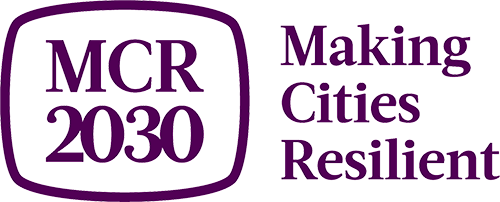Disaster planning key to ‘wonderful future’

‘What a wonderful future we could have if we just plan things better in terms of disaster resilience.’
This was the empowering message of Ms. Lalaine Marcos, representative of the Mayor’s Office of Ormoc City, Philippines, who urged cities around the world to grasp the opportunity of a more sustainable future through risk-informed decisions on how they plan their social, economic, and environmental development.
Ms Marcos was speaking at a Making Cities Resilient 2030 (MCR2030) Training on Urban Resilience which convened representatives from the Philippines cities of Ormoc, Baguio, and Makati.
‘This MCR2030 initiative has helped us all to learn and link up with other agencies to provide solutions to our disaster risk reduction challenges,’ she said. Ms Tonette Anaban, Assistant City Planning Officer for Baguio said: ‘MCR2030 has helped us realise that disaster risk management is fundamentally multi-sectoral. While one office needs to provide overall coordination, disaster resilience can only be attained through engaging all actors, including the private sector, down to the community level.
The power of peer-to-peer learning was clear as representatives from the city of Makati, guided their Philippines colleagues through a live risk assessment by using the Disaster Resilience Scorecard for Cities. Makati is one of 17 Making Cities Resilient 2030 (MCR2030) Resilience Hubs recognized for their leadership on disaster risk reduction both within their own boundaries as well as in support of other municipalities.
At the conclusion of the training, participants indicated that they had a better understanding of various aspects of disaster resilience, specifically risk assessment, project preparation, and how to access finance.
Ms Liza Velle B Ramos, Research and Planning Division Head of Makati’s Disaster Risk Reduction and Management Office said: ‘Makati is delighted to have supported this training with Ormoc and Baguio. This training is just the start: Makati commits to help make more cities resilient in the Philippines and Pacific region.’
Originally planned for 30,000 people, Baguio now has a population of 366,000. It is located at an elevation of 1,470 metres within the Cordillera Central Mountain Range, in northern Luzon and is mostly built on uneven, hilly terrain. Ormoc, meanwhile, is the largest city by land area in Leyte. With a population of 231,000, the city is situated nearby several rivers and mountains. It was badly affected by Super Typhoon Haiyan in 2013, one of the most powerful storms ever to make landfall.
Training coordinator and United Nations Office for Disaster Risk Reduction (UNDRR) Programme Manager, Ms Mutarika Pruksapong, said: ‘Perhaps the biggest value of MCR2030 is that it connects, supports, and inspires cities as they progress along their respective disaster resilience journeys. ‘This engagement opens up critical learning opportunities for cities. The role of our Resilience Hubs, such as Makati, is particularly important in this respect.’ The training gathered 26 representatives from Philippines as well as observers from India and Fiji, who are using the opportunity to take lessons and aspects of the training back to their respective countries as well as the wider Pacific region.
The United Nations-convened global network has mobilized 1,418 local governments, representing more than 386 million people, committed to strengthening their disaster and climate resilience. MCR2030 has also attracted national governments, municipality associations, service providers, as well as 12 core partners that are a ‘who’s who’ of international organizations active on urban resilience. The MCR2030 training took place at UNDRR’s Global Education & Training Institute/ Office for Northeast Asia, in Incheon. Korea’s Ministry of the Interior and Safety and Incheon Metropolitan City supported the event.

